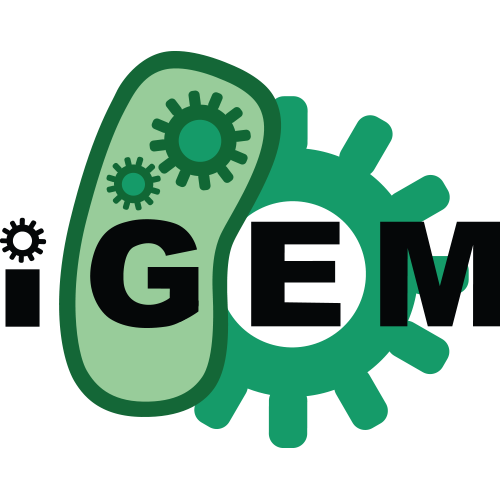Source:
Generated By: https://synbiohub.org/public/igem/igem2sbol/1
Created by: einav bar hanin
Date created: 2015-08-03 11:00:00
Date modified: 2015-09-12 05:10:45
biosensors detect food allergens. A proteins conformation change in response to ligand binding coupl
| Types | DnaRegion |
| Roles | Project engineered_region |
| Sequences | BBa_K1790000_sequence (Version 1) |
Description
GFP - The green fluorescent protein (GFP) is a protein composed of 238 amino acid residues (26.9 kDa) that exhibits bright green fluorescence when exposed to light in the blue to ultraviolet range. Although many other marine organisms have similar green fluorescent proteins, GFP traditionally refers to the protein first isolated from the jellyfish Aequorea victoria. The GFP from A. victoria has a major excitation peak at a wavelength of 395 nm and a minor one at 475 nm. Its emission peak is at 509 nm, which is in the lower green portion of the visible spectrum. The fluorescence quantum yield (QY) of GFP is 0.79. The GFP from the sea pansy (Renilla reniformis) has a single major excitation peak at 498 nm .In cell and molecular biology, the GFP gene is frequently used as a reporter of expression In modified forms it has been used to make biosensors, and many animals have been created that express GFP as a proof-of-concept that a gene can be expressed throughout a given organism. The GFP gene can be introduced into organisms and maintained in their genome through breeding, injection with a viral vector, or cell transformation. To date, the GFP gene has been introduced and expressed in many Bacteria, Yeast and other Fungi, fish (such as zebrafish), plant, fly, and mammalian cells, including human. Martin Chalfie, Osamu Shimomura, and Roger Y. Tsien were awarded the 2008 Nobel Prize in Chemistry on 10 October 2008 for their discovery and development of the green fluorescent protein.http://imgur.com/p8rX0Os
Gln h - The GlnHPQ high-affinity glutamine transport system is a member of the ATP-Binding Cassette (ABC) Superfamily of transporters [Wu95]. Based on sequence similarity, GlnH is the periplasmic glutamine-binding protein, GlnQ is the ATP-binding component, and GlnP is the membrane component of the ABC transporter. Mutation of glnP results in the impaired ability to transport glutamine as well as the inability to utilized glutamine as a sole source of carbon [Masters81, Nohno86]. Expression of the cloned glnHPQ genes on a plasmid vector restored the glnH, glnP and glnQ mutants' abilities to transport glutamine and utilize glutamine as a sole carbon source [Nohno86].
T7 - The pET expression system is one of the most widely used systems for the cloning and in vivo expression of recombinant proteins in E. coli. This is due to the high selectivity of the pET system's bacteriophage T7 RNA polymerase for its cognate promoter sequences, the high level of activity of the polymerase and the high translation efficiency mediated by the T7 gene 10 translation initiation signals. In the pET system, the protein coding sequence of interest is cloned downstream of the T7 promoter and gene 10 leader sequences, and then transformed into E. coli strains. Protein expression is achieved either by IPTG induction of a chromosomally integrated cassette in which the T7 RNA polymerase is expressed from the lacUV5 promoter, or by infection with the polymerase-expressing bacteriophage lambda CE6. Due to the specificity of the T7 promoter, basal expression of cloned target genes is extremely low in strains lacking a source of T7 RNA polymerase. Upon induction the highly active polymerase essentially out-competes transcription by the host RNA polymerase. This phenomenon, together with high-efficiency translation, achieves expression levels in which the target protein may constitute the majority of the cellular protein???after only a few hours.
Operon lactose - Bacterial operons are polycistronic transcripts that are able to produce multiple proteins from one mRNA transcript. The gene product of lacZ is β-galactosidase which cleaves lactose, a disaccharide, into glucose and galactose. LacY encodes lactose permease, a protein which becomes embedded in the cytoplasmic membrane to enable transport of lactose into the cell. Mechanism: hydrogen from the outside of the cell binds to a carboxyl group on the enzyme that allows it to undergo a conformational change.
The lac genes are organized into an operon; that is, they are oriented in the same direction immediately adjacent on the chromosome and are co-transcribed into a single polycistronic mRNA molecule. Transcription of all genes starts with the binding of the enzyme RNA polymerase (RNAP), a DNA-binding protein, which binds to a specific DNA binding site, the promoter, immediately upstream of the genes.
ATGGAAGCGGTGATTTTCGACATGGATGGAGTGCTCggtggcagcAATCCGGGTGTAAGAGAGGCGCTCGAGTTCGTAAAGAGCAAAAGAATAAAACTCGCGCTCGCAACCTCCACACCACAGCGAGAAGCGCTGGAGAGATTGAGAAGACTCGATCTCGAAAAGTACTTCGACGTCATGGTGTTCGGTGATCAGGTGAAGAACGGAAAGCCTGATCCAGAGATATACCTTCTCGTTCTGGAAAGGTTGAATGTGGTCCCAGAGAAGGTTGTGGTCTTCGAAGACTCAAAGAGCGGTGTTGAAGCCGCAAAAAGCGCCGGCATAGAAAGAATCTATGGAGTCGTTCACTCTTTGAACGACGGTAAAGCGCTTCTTGAAGCGGGTGCGGTTGCTCTGGTGAAACCCGAGGAAATCCTGAACGTTCTCAAAGAGGTTCTTggtggcagcggtagcggtGCGTTCCCGAAAGGTAGCGACGAGCTGCGTGACAAAGTCAACGGCGCGTTGAAAACCCTGCGCGAGAACGGAACTTACAACGAAATCTACAAAAAATGGTTCGGTACTGAACCGAAAggtggcagcggtggcagcggtggcagcggtggcagcATGAACTCTGTATTAAAAGTTTCACTGGCTGCACTGACCCTGGCTTTTGCGGTTTCTTCTCATGCCGCGGATAAAAAATTAGTTGTCGCGACGGATACCGCCTTCGTTCCGTTTGAATTTAAACAGGGCGATAAATATGTGGGCTTTGACGTTGATCTGTGGGCTGCCATCGCTAAAGAGCTGAAGCTGGATTACGAACTGAAGCCGATGGATTTCAGTGGGATCATTCCGGCACTGCAAACCAAAAACGTCGATCTGGCGCTGGCGGGCATTACCATCACCGACGAGCGTAAAAAAGCGATCGATTTCTCTGACGGCTACTACAAAAGCGGCCTGTTAGTGATGGTGAAAGCTAACAATAACGATGTGAAAAGCGTGAAAGATCTCGACGGGAAAGTGGTTGCTGTGAAGAGCGGTACTGGCTCCGTTGATTACGCGAAAGCAAACATCAAAACTAAAGATCTGCGTCAGTTCCCGAACATCGATAACGCCTATATGGAACTGGGCACCAACCGCGCAGACGCCGTTCTGCACGATACGCCAAACATTCTGTACTTCATCAAAACCGCCGGTAACGGTCAGTTCAAAGCGGTAGGTGACTCTCTGggtggcagcggtagcggtTCTCTGGAGAACTTCAAAAAGAGGGTCCACGAAGAAAAAAAGCGCGTTTTCTCTGAGCTTCTCAAGGAAggtggcagcATGGACACAGAGCCTCTCTACTTCGAAGCTTACAGAAGAGTCGCGGAAAGCTATGGAAAACCTTACACGGAGGATCTCCACAGGAGAATAATGGGAGTTCCTGAAAGAGAAGGTCTTCCCATCCTCATGGAAGCTCTGGAGATAAAAGATtaa
http://imgur.com/d6e44hR
Notes
http://imgur.com/PtWnsjU,jz7cmP7,EKg1L2N#0http://imgur.com/PtWnsjU,jz7cmP7,EKg1L2N#1
http://imgur.com/PtWnsjU,jz7cmP7,EKg1L2N#2
Source
E.Coli - E. coli bacteria were discovered in the human colon in 1885 by German bacteriologist Theodor Escherich. E. coli is often referred to as the best or most-studied free-living organism. More than 700 serotypes of E. coli have been identified. The E. coli that are responsible for the numerous reports of contaminated foods and beverages are those that produce Shiga toxin, so called because the toxin is virtually identical to that produced by Shigella dysenteria type 1The bacterium can be grown and cultured easily and inexpensively in a laboratory setting, and has been intensively investigated for over 60 years. E. coli is the most widely studied prokaryotic model organism, and an important species in the fields of biotechnology and microbiology, where it has served as the host organism for the majority of work with recombinant DNA E. coli is a Gram-negative (bacteria which do not retain crystal violet dye), facultative anaerobic (that makes ATP by aerobic respiration if oxygen is present, but is capable of switching to fermentation or anaerobic respiration if oxygen is absent) and nonsporulating bacteria.
